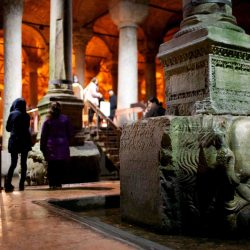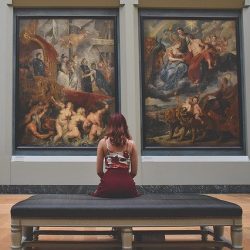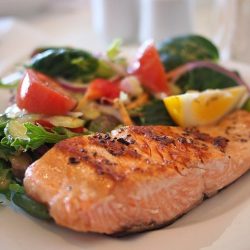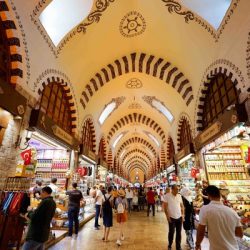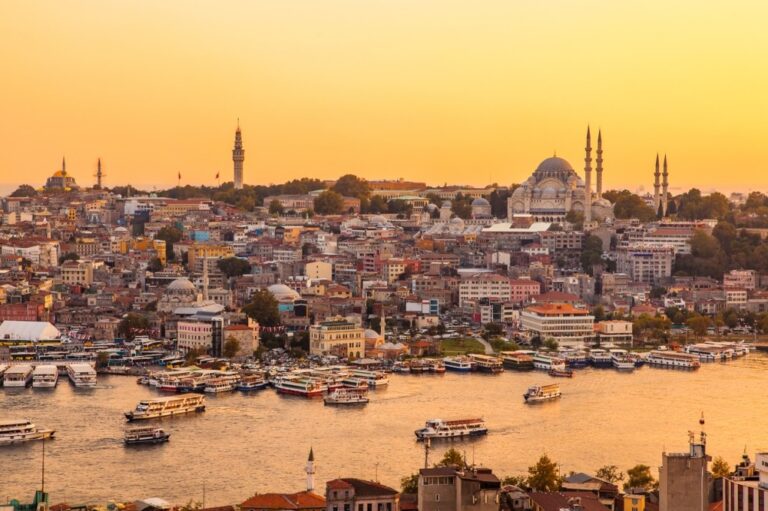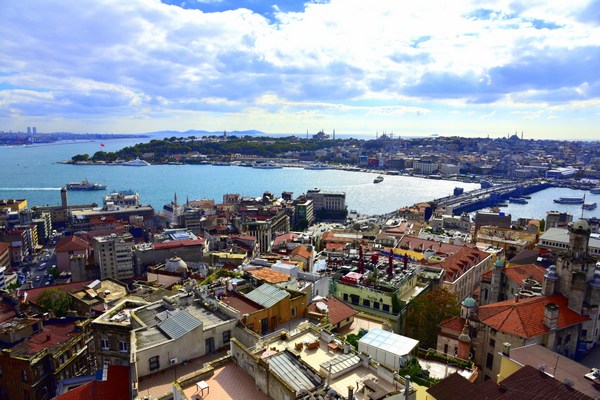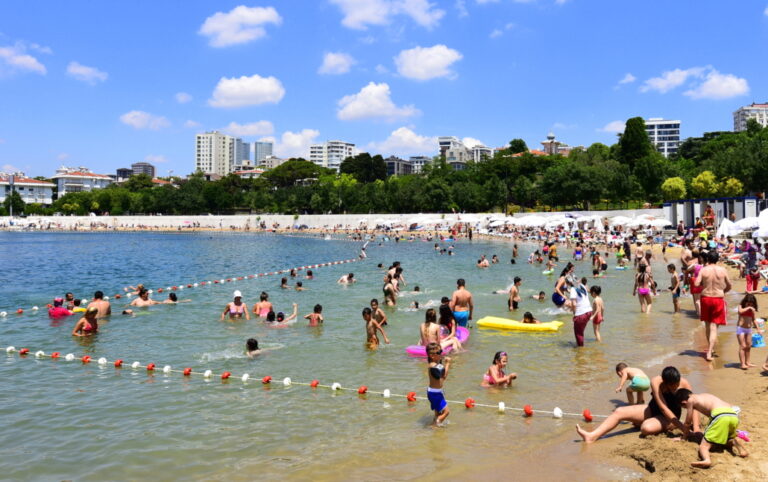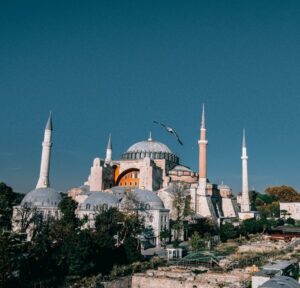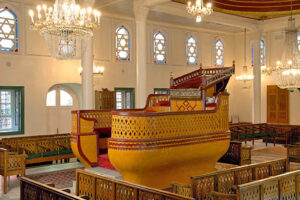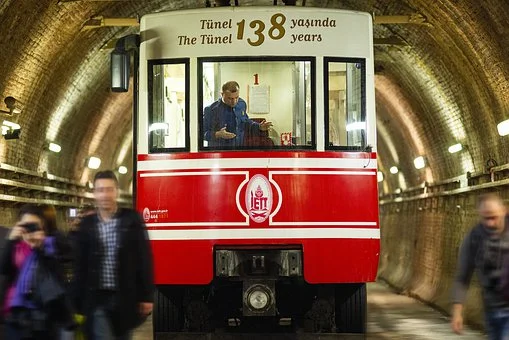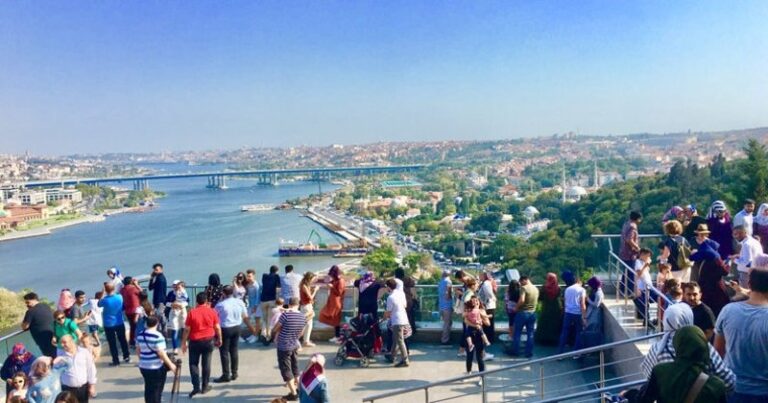The City is built on seven hills and is surrounded by city walls. But when did Istanbul begin to be known as “the seven-hilled town?”
Read More —>
Allow enough time to see as well as Aya Sofya (Hagia Sophia), Topkapi Palace, Blue Mosque(Sultanahmet), Basilica Cistern, and Grand Bazaar(Kapalı Çarşı).
Read More —>
Istanbul has several magnificent coasts and beaches all of which are within 20 to 60 kilometers of the city center.
Read More —>
The English name for the Bosphorus derives from a Greek fable about Zeus having an affair with a lovely woman named Io.
Read More —>
Yildiz Grove, Gulhane Park, Emirgan Grove, Fethi Pasha Grove, Çamlica Hill,Cubuklu, Hidiv Pavilion, Fatih Grove(Otağtepe Park)
Read More —>
Religious Places
Istanbul is a city that spans two continents and has been home to a variety of empires. Every civilization that inhabited the city left its imprint, and Istanbul today exhibits the scars of its past.
This city, which has been home to many different religions and cultures for centuries, has a plethora of historical sites to see.
It is home to numerous gorgeous and spectacular mosques, churches, and synagogues, all of which are architecturally and culturally significant.
Hagia Sophia (Aya Sofya), Blue Mosque(Sultanahmet Camii), Süleymaniye Mosque, Aya İrini(Saint Irene), Fener Greek Patriarchate, Neve shalom Synagogue, Saint Antoine Church are only some of the examples of sacred monuments.
Historical Quarters
The Emperor Constantine of Byzantium’s 57-meter-high Cemberlitas Column (the Column of Constantine) was removed from Rome’s Temple of Apollo and transported to Istanbul. Because the column had been damaged by fires and natural calamities throughout its history, it was hooped during the reign of Mustafa II to assure strengthening and was dubbed Çemberlitaş as a result (the Hooped Stone). Nuruosmaniye Mosque, Çorlulu Ali Pasa Madrasah, and Çemberlitaş Bath are among the historical landmarks that attract tourists nowadays.
Eminönü, located on the Historical Peninsula, is one of the most picturesque places to dine on fish. The neighborhood is also the foundation point of the city of Byzantium, which is one of Istanbul’s early settlements, and it housed governmental units during the Byzantine and Ottoman periods. Gülhane Park, the New Mosque, the Spice Bazaar, and the Hünkar Pavilion are among the attractions in the district, which takes its name from the Ottoman-era customs directorate.
Bakirkoy, which dates back to the Bronze Age and was used as a site of entertainment by Constantine in 384 AD, is located on the western side of Istanbul. During the Ottoman Period, the district was known as Makrohori and Makrikoy, and until the Republican Period, it was known as Makrohori and Makrikoy.
During the Byzantine period, Bebek was a little Greek fishermen’s town that grew into one of Istanbul’s most attractive areas, complete with historical palaces and other landmarks. Mehmed II appoints a company officer named Bebek Çelebi to this location during the construction of the Rumeli Hisar and the siege of Istanbul. This officer’s name is later given to the quarter.
Thousands of people visit Beşiktas every day because of its ancient structures and natural beauty, as well as its central location. During the Byzantine Period, it was utilized as the emperors’ summer residence. During the Ottoman period, the district became known as a residential area. Due to the five stone columns for mooring the ships ruled by Hayreddin Barbarossa, the district was historically known as Beştas (five stones). With time, the name became Beşiktas.
Beyazit is one of Istanbul’s most significant political and historical sites. Theodosius constructed Beyazit in 393 as the city’s largest square. The Beyazit Square, as one of the city’s key transportation hubs, has seen several political events. The square, which had gained political significance during the Ottoman period, retained it in the cultural sphere during the Republican period. Istanbul University, one of the world’s best and most well-known universities, is located in this neighborhood, as are the Suleymaniye Mosque, Second-Hand Book Bazaar, and Grand Bazaar.
Beyoglu is now a cultural hub, featuring museums, Taksim Square, Istiklal Street, and historical landmarks. During the Byzantine Period, the Pera neighborhood in Beyoglu was an important trading center where Venetians and Genoese dwelt. Unfortunately, Pera was likewise a victim of the Crusades’ occupations and plunders in the 11th century. Following the conquering of Istanbul, the neighborhood was reborn as a center for art and commerce. The district is thought to have gotten its name from Suleiman I’s address “Beyoglu” (son of Bey) to the Venetian ambassador who lived here.
After the takeover of Istanbul, Eyup was one of the earliest Ottoman-Turkish settlements. Beyond the fortifications, on the south side of the Golden Horn, is the district. The area was named after Abu Ayyub al-Ansari, who had a shrine built here. According to mythology, the grave of Ansari was discovered with the help of Akshamsaddin, Mehmed II’s tutor and counselor. The girding of the sword by sultans following their ascent to the throne was one of the most fascinating ceremonies during the Ottoman period.
With its banks and commercial buildings, Karaköy is one of Istanbul’s oldest trading centers. Karaköy, known throughout history as a port and trading center, is where the Bosporus meets the Golden Horn. The present name for the ancient Galata quarter is Karaköy. The Genoese tradesmen settled in the area with the permission of the Byzantine Emperor around the beginning of the 11th century. Later, the Genoese built strong walls and towers to protect their lives and possessions. The Galata Tower, which is also one of the city’s icons, is the most notable of these monuments.
üsküdar was founded in 1000 BC, when the Phoenicians arrived and developed their trade ports and shipyards at what is now Salacak. During the Roman and Byzantine times, when the territory was known as Scutari, the settlements were also maintained. Following the Ottoman takeover of Istanbul, Uskudar rose to prominence as a major Anatolian center. Mosques, masjids, baths, caravan inns, fountains, libraries, palaces, mansions, and pavilions erected for sultans, pashas, and statesmen can all be found in Üsküdar today. Hezarfen Ahmed Celebi flew from Galata Tower to Uskudar for the world’s first flight.
Sut Menbat, a Greek settlement, once stood where Sütlüce now stands. A statue of a woman delivering water from her breasts was erected in a village corner. Women’s milk production was thought to be enhanced by the water. As a result, Sütlüce became a name for the quarter (Milky).
Samatya is a Fatih district quarter that attracts a lot of attention from movie and serial makers because of its well-preserved historical texture. The quarter is followed by Yedikule in the west, which covers a portion of the Kocamustafapasa Neighbourhood. Due to the sandy soil of the sector in the past, it is thought that the quarter got its name from “Psamatyon,” the Greek equivalent for “sandy.” The quarter has the Church of St. George of Samatya, Hagios Nikolaos Church, and Kapiagasi Yakup Aga Bath, which were all built during the Byzantine period.
Until the twentieth century, Ferikoy was a small Greek settlement known as Hagios Demetritos. The nearby woodland of the quarter drew well-known hunters to come and hunt for animals. Monsieur Ferry, a French dealer from the nobility of Izmir and Istanbul, was one of these hunters. Ferry, who lived in Galata, took his rifle on vacation to Hagios Demetritos, where he frequently hunted and eventually decided to build a mansion in this modest and picturesque village. From time to time, the Ferry family came to visit and stayed in this mansion. Following this time, Hagios Demetritos became known as “Monsieur Ferry’s Village,” according to some media.
Darusaade Agasi Behram Cavus Mosque (built-in 1570 during the reign of Grand Vizier Sokullu Mehmet Pasa), Dekema Apostoli Church (built-in 1868 and dedicated to the 12 apostles), Sirpots Vartanans Armenian Church (built-in 1861), and Latin and Protestant graveyards are among the historical sites in Ferikoy.
Within the Kadikoy area, Göztepe is a quarter on the Anatolian Side. The name Göztepe (Observing Hill) comes from the location where Gozcu Baba, a Merdivenkoy Sahkulu Convent sheik, took observations. Where the convent now stands was once the hunting lodge of Andronikos, a Byzantine monarch. In this lodge, the peace contract that followed Orhan Ghazi’s capture of Izmit was signed. The pact also stipulated that the lodge might be used as an Ahi monastery. The Bektashis used the lodge for many years to keep the Bektashi culture alive during the Turkish rule.
The Ahi sheiks of the monastery were entrusted to keep an eye on the Byzantines during the reign of Celebi Sultan Mehmed. The Ahi sheiks were dubbed the observers from then on. The sheiks of the monastery lived in this stone edifice until recently. Hasan Tahsin Baba was the last landowner. Today, the Şahkulu Sultan Convent is one of the places where Alevi culture and gathering are preserved.
After the summer lodge erected for Yusuf Izzettin Efendi, the son of Abdulaziz, in 1870, Zincirlikuyu was formed and flourished. The presumed suicide of the crown sultan with his slit wrists tarnished the quarter, and it failed to grow as a habitation area. As a result, Zincirlikuyu has largely been utilized as a graveyard, which is located on the grounds of Yusuf Izzettin Efendi’s hunting lodge. The hunting lodge, on the other hand, is currently being used as a vocational high school. Zincirlikuyu (the Chained Well) gets its name from a well beneath the lodge that no longer exists.
Acibadem, located southeast of Kuçukçamlıca, is famous for being the residence of Battal Ghazi, who spent much of the eighth century observing Byzantium. Acibadem was once known as “Ali Bahadir” or “Battal Ghazi Vineyards” because of his bravery. Acibadem was owned by Kızlaragasi Misirli Osman Aga in the early 17th century and is located between the Rasimpasa and Kucukcamlica neighborhoods. Murad IV expropriated the land in 1630, and Selim III acquired it in the 1800s. Among the broad meadows, gardens, vineyards, and orchards that extend towards Kucukcamlica, Acibadem is home to several courtier, sultan, prince, and pasha houses.
It is known that a trade colony called Harhadon was established in Fikirtepe by the Phoenicians around 1000 BC. A second settlement, called Halkedon (Copper Land), is formed opposite this first settlement. During this period, Halkedon (Chalcedon) became famous for the Temple of Apollo. Haydarpaşa Meadow is used by the people of Halkedon for horse races.
B.C. Byzantium, which settled in Sarayburnu in 658 and laid the core of the Byzantine city, admired the beauty of the region and called Kadıköy the “Land of the Blind”, characterizing the people who settled on the opposite side (in Kadıköy) with blindness. For this reason, it is also called by this name in various sources.
In the following centuries, Halkedon underwent various sieges. In 1352-1353, the area around Halkedon came under Ottoman control to a large extent. Mehmet the Conqueror gives Halkedon to the first Kadi of Istanbul, Celalzade Hızır Bey. It is said that the name of the settlement has changed to Kadıköy
It is said that the name of the settlement has changed to Kadıköy.
Balat, also known as Petrion during the Byzantine period, was a wealthy Greek trading neighborhood. Residents of the quarter fled their homes just before Istanbul’s conquest, only to return after Mehmed II promised that their way of life and religion would not be affected. Balat, like Hasköy on the other side of the quarter, had a large Jewish population and hence has a large number of surviving mosques, churches, and synagogues.
Kanlica has a number of legends surrounding it. According to the most popular version, an Ottoman sultan asks his servants to identify the cleanest quarter in Istanbul one day. He also seeks vizier advice in determining how to measure cleanliness. According to one of the viziers, poles with bloody meats should be erected in all of the quarters. The cleanest quarter would be the last to go off. The Sultan issues the command, and Kanlica (Bloody) is the first to arrive. The quarter is named after the Ottoman sultan.
Okmeydanı is a district in Istanbul that spans both the Kagithane and Sisli districts. The name Okmeydanı (Archery Square) comes from the square and dervish lodge that Mehmed II built here for archery tournaments. The ranges of long-distance arrows are determined by milestones in the adjacent streets.
What to Buy From Where
The most important icon of this neighborhood is the Ortaköy Mosque (Büyük Mecidiye Mosque). The street-side counters are brimming with vibrant, one-of-a-kind handmade gifts that can’t be found anywhere else. A wool knit hat, a bookmarker, or a piece of jewelry are all possibilities. Furthermore, going around the shops while eating Ortaköy’s famed “kumpir (stuffed baked potatoes)” is a delight.
This district, named after the mosque built in honor of Süleyman the Magnificient’s son Cihangir, is one of Istanbul’s most vibrant and multicultural areas. Çukurcuma, a nearby town, is a true antique hub. Original antique antiques, as well as designer products made from a mix of old and new materials, can be found. The nearby Tomtom district is quickly becoming a designer hotspot. Shopping in the area and sipping Turkish coffee at fine cafés will provide you with a wonderful day in Istanbul.
“Lokum” translates to “Turkish Delight,” and it is an essential component of our holiday sweets and coffee ceremonies. It’s also a word we use to describe “perfection” in our culture. Turkish Delight occupies a prominent position in Turkish dessert culture. With a box of Turkish Delight from one of the old sweet stores, you may create a sweet link with your loved ones.
“Having a cup of Turkish Coffee with a dear one generates amazing memories that will be remembered for forty years,” according to an old adage in our country. It’s always been a part of our joyful recollections, long discussions, and downtime. One of the things that distinguish Turkish coffee is that it has its own set of ceremonies. Its origins, preparation, and consumption differ significantly from that of other coffee kinds. It’s one of the most popular flavors available at Eminönü, and it’s perfect for sharing with your loved ones. After you’ve finished your coffee, you can have your fortune read from the cups, as is customary in Turkey. Another Turkish coffee proverb goes, “The heart neither wishes coffee nor the coffee house; the heart wishes to be among companions, and coffee is the excuse,” emphasizing the beverage’s importance in our communication culture.
The route that runs from Tunnel Square to Galata, Kuledibi is known as Galip Dede Street. Musical instrument stores have been around for nearly three decades, displacing antique shops, philatelic shops, booksellers, and patisseries. While traveling down this street, you may see everything from musical instruments to sound system equipment, as well as witness history dating back to Genoese times.
Second-hand book shops may be found in various lanes and tunnels throughout Beyoglu, where you can have a variety of experiences. Every time you visit a used book, you can learn something new and locate books in a variety of languages. Furthermore, Beyoglu is one of the best places to buy gifts. You may find unique giftware that reminds you of Istanbul either inside old arcades or along the roadside alleys.
At the turn of the nineteenth century, Ottoman glass art reached a breakthrough. Sultan Selim III sent Mehmet Dede, a Mevlevi Dervish, to Italy in 1807 to learn glass art and expand his skills. He founded a glasswork studio in the village of Beykoz after working in Italy for a while and began producing a range of glasswork. This painting was later titled after the location where it was created. Gulabdans (rose water bottles), pitchers, casters, and bowls in Beykoz Style Glass Art are available in a variety of techniques and patterns, including Çeşm-i Bülbül, Maydonozlu, Mine (glazed) Décor, and Yaldzl (gilded). You can make your loved ones happy throughout your stay in Istanbul.
The Eyüp neighborhood became a toy manufacturing center during the Ottoman Empire, and the toys made there were known as “Eyüp Toys.” You can learn about the history and buy toys such as the nightingale whistle, çınçın vehicles, pinwheels, timbal (dümbelek), wooden chairs, wooden cradles, wooden trucks-buses, trumpets, and tambourines during your stay at Eyüp.
Laleli is a town located between Beyazit and Aksaray, and it was named after Laleli Baba, who lived during Sultan Mustafa III’s reign (1757-1774). It is now one of Istanbul’s most major trade centers. Clothing, textile materials, shoes, and accessories of all kinds are made here and shipped to other countries. This area also has a lot of tourist-oriented souvenir shops.
The Engravers’ Market used to be known as Sahaflar çarşısı (Second Hand Book Market), which is located behind the Beyazit Mosque. In the 1890s, secondhand book vendors began to congregate in Beyazt and the Grand Bazaar area. The bazaar was rebuilt with concrete after a fire in 1950 and is now entirely dedicated to book sales. Used books and giftware can be found in the market, where you can feel the heritage of ages.
Grand Bazaar is the granddaddy of all retail malls, with more than 500 years of existence. The 1894 earthquake completely damaged the edifice, which is an emblem of Ottoman architectural identity, and it was restored in 1898. In Grand Bazaar, you may buy jewelry made primarily of gold or silver, as well as various gemstones. Rugs, textiles, antiques, and giftware shops are among the center’s other must-see attractions. Visiting the Grand Bazaar allows you to immerse yourself in Istanbul’s history and economic dynamics. Visiting is “a way to explore Istanbul through a Covered Bazaar.”
Mahmutpaşa, now part of Fatih, has historically been a major shopping destination. From towels to slippers, clothing to accessories, adjacent businesses in tiny lanes are crowded according to the things they sell. Shopping for key rituals such as engagements, weddings, and circumcision celebrations in Mahmutpaşa is a must-do for Istanbul residents. Dowry is meticulously selected from Mahmutpaşa’s stores, as are all of the necessary goods for engagement and wedding preparations. Boys are often brought to Mahmutpaşa for circumcision and to shop for their favorite outfits.
Spice Market, located close to the Yeni Mosque in Eminönü, was designed by Architect Kasim Pasa for Valide Turhan Sultan in 1660. Spices imported from Egypt were marketed through this market during the time. As a result, it’s also known as the Egyptian Bazaar. Spices from all across Turkey and the world, as well as giftware, can be found in the bazaar. The perfume of a variety of spices greets visitors as soon as they enter.
Nişantaşı, which is close to Maçka, Teşvikiye, Harbiye, and Osmanbey, is one of Istanbul’s most fashionable neighborhoods. Here, fashionable clothing and accessories are on show. This section contains everything connected to apparel, from high-end companies to haute couture. In Nişantaş, you may explore the magnificent world of art, from sculptures to furniture, galleries to auction houses.
The leather trade in Zeytinburnu dates back to Sultan Mehmet the Conqueror’s reign. During that time, the region became a major manufacturing center after tanneries from all across Anatolia were relocated to Zeytinburnu to produce leather items for the soldiers. The relocation of Greek-owned leather enterprises to this area has also aided the development of leather tanning in this area. Despite the fact that tanneries in the area have been relocated to Tuzla for environmental concerns, the district remains one of the areas where visitors can easily purchase various types of leather items.
The complex, which was developed in the 1960s, serves as a major crossroads for Turkish textile trade. Thousands of brands are represented on Merter, a site where you may locate any textile product. With its hotels, restaurants, and trade centers, the area where you can find both retail and wholesale establishments is usually lively.
FIND YOUR TICKET AND HOTEL
What did they say about Istanbul

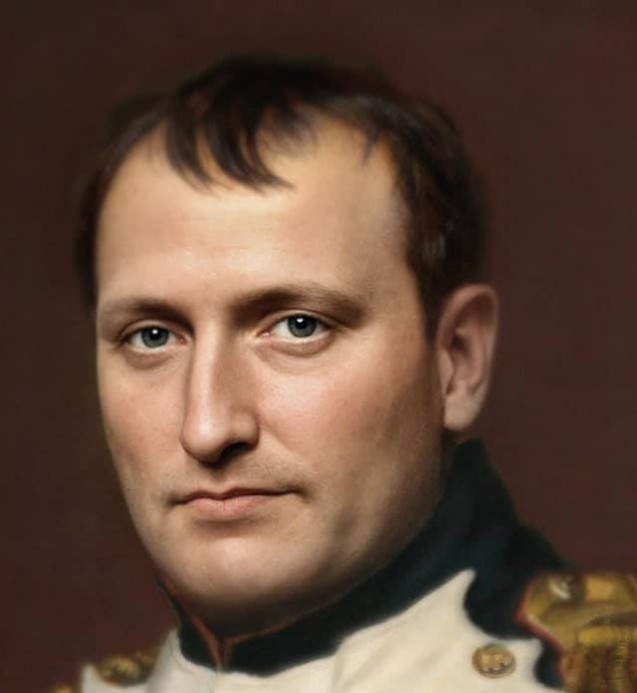


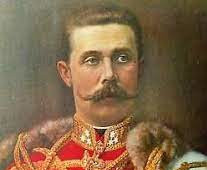

POEM BY ORHAN VELİ KANIK: Translated by Talat Sait Halman (1982)


